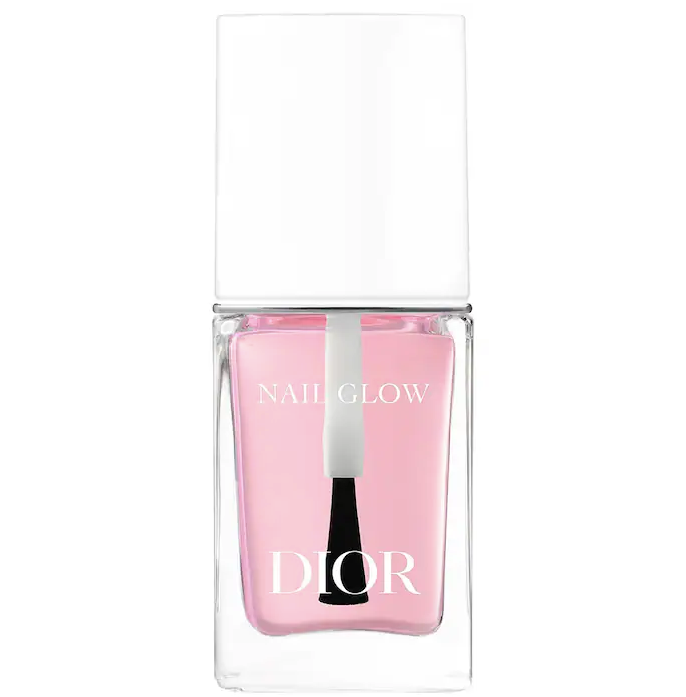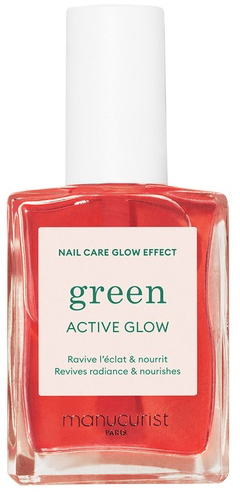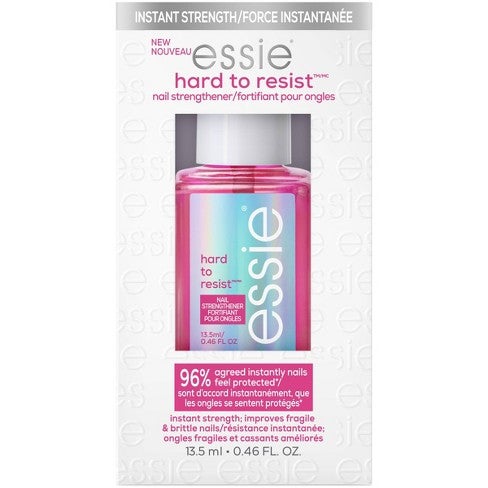I’ve always had an inkling that my nails played a part in securing me a job in magazines. Don’t get me wrong — sheer determination and hours spent mopping up shampoo spills in a cramped beauty closet certainly helped, but had the interviewer not complimented my manicure (glitter-tipped acrylics, long enough to do serious damage), I might not have made the grade. “You’d fit in perfectly,” they told me with a nod towards my nails. “Where do you get them done?”
I’d forgotten all about it until recently, when I came across a viral TikTok video captioned, “You might think that no one notices your nails, but I actually think it plays a big role in pretty privilege.” In the clip, which has amassed an enormous 1.4 million views, TikToker @egybestie claims that the humble manicure is so much more than an aesthetic choice: “People treat me different when my nails are done versus when they’re not done,” says @egybestie. “I feel like I’m taken a little bit more seriously when my nails are actually done.”
AdvertisementADVERTISEMENT
The TikToker goes on to say that nails are significant and can even open doors in life. It’s a bold statement, but a quick scroll through the comments proves that people feel similarly: “Bartender here. I actually get more tips when my nails are done versus when they aren’t,” observes one. Another says: “This. I have always kept my nails painted, even at my poorest, for this reason.”
@egybestie You might think that no one notices your nails but I actually think it plays a big role in pretty privilege #prettyprivilege ♬ original sound - egybestie
What is “nail privilege”?
If social media is anything to go by, the idea of “nail privilege” is a hot topic. But is it actually an extension of pretty privilege? Pretty privilege suggests those who are conventionally attractive — often based on outdated, Eurocentric beauty ideals like white skin and straight hair — have better social and economic advantages. So, can something as seemingly simple as a manicure really make you successful?
While nails are often considered a frivolous expense, their influence is not to be underestimated. London-based manicurist Ami Streets firmly believes that manicure privilege exists, and it’s all thanks to the cultural meaning we have attached to nails — specifically colors — over time. “Color is a communication tool,” says Streets, “and there is psychology behind our choices. Research shows that we associate certain shades with various emotions.” Take red, for instance. The color has long been linked to action and energy, while various studies have found an association with attractiveness and dominance. There’s even TikTok’s viral “red nail theory”, which deduces that men find red nails more enticing, because they hold a nostalgic quality. Metta Francis, nail technician and founder of Nails by Mets, agrees that the color red is highly significant. The old adage that red lipstick can command a room and instantly boost one’s confidence extends to nails, says Francis. The idea that a bold or intricate manicure can encourage a positive mood is likely why some people feel as though they are treated better when their nails are done, suggests Streets; there is a mirroring effect at play.
AdvertisementADVERTISEMENT
Why is there pressure to have manicured nails?
Aside from trends, there are countless reasons why people get their nails done. Beauty journalist Humeara Mohamed, who often experiences eczema flare-ups on her hands, says she doesn’t feel as embarrassed about her skin condition when her nails are painted. As an ex-nail biter, freelance beauty journalist Lucy Partington says a manicure makes her feel more “pulled together.” The idea that something so simple can make us feel confident, and empowered, and can potentially help us accomplish more, is undoubtedly a positive thing. If social media is anything to go by, though, groomed nails have become something of an expectation thrust predominantly on women: “I think girls should get their nails and toes done every two to three weeks,” affirms podcaster Kristen Gaffney in a viral TikTok clip with three million views and climbing. “They should always [...] take pride in that.” The comments section — and various stitched videos — speak volumes: Such beauty ideals are exhausting and unattainable.
Interestingly, the nail standards we hold today are at odds with the origin story of the manicure. Suzanne E. Shapiro, fashion historian and author of Nails: The Story of the Modern Manicure, says that the concept of getting our nails done hasn't always preyed on women’s insecurities and false needs. “A surprisingly strong feminist narrative runs throughout the manicure’s history,” says Shapiro. In the late 19th century, painted nails were a risqué style statement. “The boldest personalities, often coming from opposite ends of the social spectrum — i.e. wealthy cosmopolitans on one side and working women on the other — took more beauty risks in the early 20th century,” explains Shapiro. “By the 1920s, some really layered on the new liquid nail polishes on the market.” Later, cultural icons like Frida Kahlo, Josephine Baker, Anna May Wong, and Rita Hayworth were known for their bold nails. Getting a manicure, whether professional or DIY, acquired the meaning many of us appreciate today, says Shapiro: “They were relatively cheap pick-me-ups, a way to have fun with fashion trends, and a form of personal expression and renewal.”
AdvertisementADVERTISEMENT
Fast forward to 2024, and nails are big business. It is estimated that there are over 53,000 nail salons in the US, while certain colors, shapes, and techniques (think the Russian and Ukrainian manicure) continue to dominate Google searches. The idea that we’ll be taken “less seriously” sans painted nails turns history on its head and runs contrary to conversations of previous decades, says Shapiro, where women worried that they would appear shallow for displaying feminised beauty preferences — especially in the workplace. “In the 1990s, for example, women were fighting for professional advancement and pay parity,” says Shapiro. “They found themselves in the double bind of having to appear attractive in mainstream terms but not too attractive, which would downgrade their intellectual merits and seem to invite their objectification.”
Can anyone have nail privilege?
In 2024, it seems there is another Catch 22: Only certain nail styles are palatable. Alicia Lartey, a qualified aesthetician and beauty writer, notices a stark difference in how she is treated — by both men and employers — depending on the length and color of her nails. “If I go for simple, short designs, I find that [beauty] brands are nicer to me and people treat me with more respect,” says Lartey. “If my nails are long and elaborate, it’s always a very negative experience.” Lartey reports that brands actively avoided working with her when she had longer nails. What’s more, long nails with brightly colored and intricate designs are embedded in Black culture. The view that they are less acceptable than short, plain nails is evidently discriminatory. When you consider that the much-revered “clean girl” aesthetic (which champions short, “classic” nude nails) has been co-opted by white women, it’s clear that nail privilege is at play.
AdvertisementADVERTISEMENT
But is nail privilege just plain privilege dressed up? Shapiro suggests that well-manicured nails have long been associated with status, class and the treatment of individuals across many cultures. “If you worked with your hands, it would be harder to maintain perfect nails,” says Shapiro; only the most elite would have access to professional manicuring services. Even today, many people are excluded from the routine of a regular manicure. For various reasons, including safety and hygiene, short, bare nails are a requirement for those who do manual work or are employed in health and social care. Such jobs are notoriously underpaid, and with costs rising left and right, manicures are an expensive upkeep that not everyone can afford. If nails really are an important factor in the social climb, countless people are left out.
This echoes a wider conversation about beauty maintenance on social media. The phrase “high maintenance to be low maintenance” has 493.3 million views on TikTok and counting, as influencers and beauty enthusiasts alike share the “game-changing” beauty treatments that save them time and money in the long run. Manicures are up top, but with costs rising, we’re rightly asking: Who is this all for? And is it actually attainable? “I really think a lot of people are confused about which beauty services are ‘luxury’ versus what’s a ‘necessity’,” says TikToker @crystaluncut in a video with 1.4 million views. “I struggle to figure out where in the timeline of life we figured out that in your 20s you need nails and feet, hair, lashes, waxes all done on a schedule every two weeks.” Of course, influencer culture plays a large part in the pressure to look groomed at all times, but here’s the thing: Most influencers get their beauty treatments for free.
AdvertisementADVERTISEMENT
What are the best natural nail treatments?
Luckily, 2024 is shaping up to be the year of the anti-trend. Last year, gel manicures fell under the microscope following increasing reports of allergies to gel nail products, including nail damage and allergic dermatitis due to uncured (wet) gel polish touching the skin. Such issues are especially risky with at-home gel kits or when visiting under-qualified nail technicians. The safety of acrylic nails has also been thrown into question thanks to the presence of methyl methacrylate (MMA), a bonding agent that is so potent it can cause long-lasting damage to the nail plate. It’s no wonder that manicurists are returning to bare, natural nails with a focus on nail health.
In London salons, the polish-free “Japanese” manicure, which promises to save weak, brittle nails, is taking over from the intricate Russian and Ukrainian manicures, while Francis’ most popular service at the moment is IBX, a professional strengthening and repair treatment. For clients who want something more, Francis might add a light layer of builder gel in a natural, semi-sheer shade.
Streets also predicts a return to DIY polish over risky at-home gels following the recent popularity of Dior Nail Glow, a subtle nail tint that doesn’t require any additional base coat or top coat. “This has prompted a handful of similar polishes designed to enhance the texture, color, and natural shine of nails,” says Streets, like Manucurist Active Glow Treatment Polish. Lastly, nail polish brands are focusing on reparative ingredients to enhance natural nails, says Streets. She pinpoints Essie Hard To Resist Nail Strengthener, which acts like a concealer to improve and correct stains and brittle texture.
AdvertisementADVERTISEMENT
Nail privilege is undoubtedly a controversial topic. Just like wearing makeup, getting a manicure is a certified confidence booster, but the idea that this alone can make us more successful undervalues our capabilities. Manicure or no manicure, one thing is true: Nails certainly don’t dictate our worth.
This story was originally published on Refinery29UK.
At Refinery29, we’re here to help you navigate this overwhelming world of stuff. All of our market picks are independently selected and curated by the editorial team. All product details reflect the price and availability at the time of publication. If you buy something we link to on our site, Refinery29 may earn commission.
AdvertisementADVERTISEMENT









